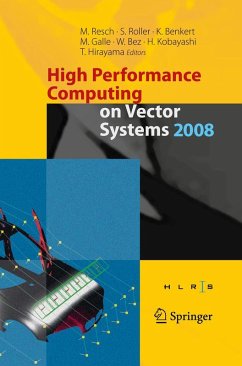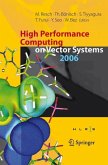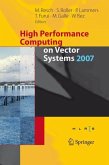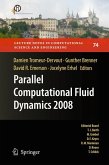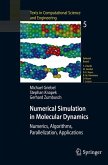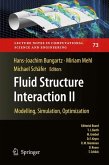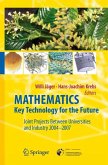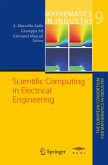This book presents the state of the art in high-performance computing and simulation on modern supercomputer architectures. It covers trends in hardware and software development in general and specifically the future of vector-based systems and heterogeneous architectures. The application contributions cover computational fluid dynamics, fluid-structure interaction, physics, chemistry, astrophysics, and climate research. Innovative fields like coupled multi-physics or multi-scale simulations are presented. All papers were chosen from presentations given at the seventh Teraflop Workshop, held in November 2007 at Tohoku University, Japan; the eighth Teraflop Workshop, held in April 2008 at the Höchstleistungsrechenzentrum Stuttgart (HLRS), Germany; and at the Japan Atomic Energy Agency in April 2008.
This book covers the results obtained in the Tera op Workbench project during a four years period from 2004 to 2008. The Tera op Workbench project is a colla- ration betweenthe High PerformanceComputingCenter Stuttgart (HLRS) and NEC Deutschland GmbH (NEC-HPCE) to support users to achieve their research goals using high performance computing. The Tera op Workbench supports users of the HLRS systems to enable and - cilitate leading edge scienti c research. This is achieved by optimizing their codes and improving the process work ow which results from the integration of diff- ent modules into a "hybrid vector system". The assessment and demonstration of industrial relevance is another goal of the cooperation. The Tera op Workbench project consists of numerous individual codes, grouped together by application area and developed and maintained by researchers or c- mercial organizations. Within the project, several of the codes have shown the ab- ity to reach beyond the TFlop/s threshold of sustained performance. This created the possibility for new science and a deeper understanding of the underlying physics. The papers in this book demonstrate the value of the project for different scienti c areas.
This book covers the results obtained in the Tera op Workbench project during a four years period from 2004 to 2008. The Tera op Workbench project is a colla- ration betweenthe High PerformanceComputingCenter Stuttgart (HLRS) and NEC Deutschland GmbH (NEC-HPCE) to support users to achieve their research goals using high performance computing. The Tera op Workbench supports users of the HLRS systems to enable and - cilitate leading edge scienti c research. This is achieved by optimizing their codes and improving the process work ow which results from the integration of diff- ent modules into a "hybrid vector system". The assessment and demonstration of industrial relevance is another goal of the cooperation. The Tera op Workbench project consists of numerous individual codes, grouped together by application area and developed and maintained by researchers or c- mercial organizations. Within the project, several of the codes have shown the ab- ity to reach beyond the TFlop/s threshold of sustained performance. This created the possibility for new science and a deeper understanding of the underlying physics. The papers in this book demonstrate the value of the project for different scienti c areas.

